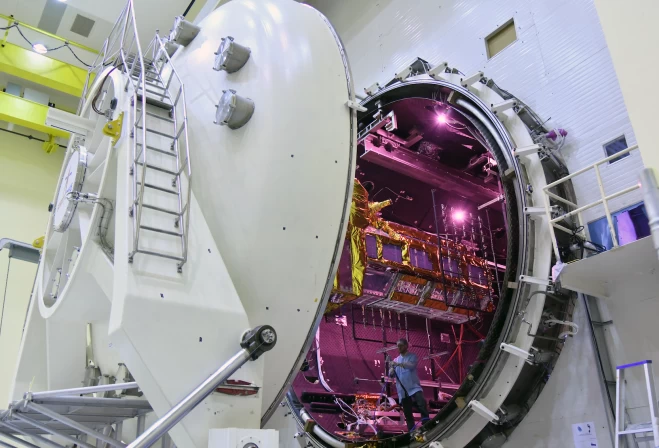

NISAR, the trailblazing Earth-observing radar satellite being developed by the United States and Indian space agencies, passed a major milestone on Nov. 13, 2023, emerging from a 21-day test aimed at evaluating its ability to function in extreme temperatures and the vacuum of space.
Short for NASA-ISRO Synthetic Aperture Radar, NISAR is the first space hardware collaboration between NASA and the Indian Space Research Organisation (ISRO) on an Earth-observing mission. Scheduled to launch in early 2024, the satellite will scan nearly all the planet’s land and ice twice every 12 days, monitoring the motion of those surfaces down to fractions of an inch. It will be able to observe movements from earthquakes, landslides and volcanic activity and track dynamic changes in forests, wetlands and agricultural lands.
The thermal vacuum test occurred at ISRO’s Satellite Integration and Test Establishment in the southern Indian city of Bengaluru. It’s one of a battery of tests the satellite will face leading to launch. Other tests will ensure it can withstand the shaking, vibration and jostling that it will encounter during launch.